Hydrogen peroxide is a powerful bleaching agent that can help you get a brighter smile. But before you start using it, there are a few things to consider. First, make sure you’re using the right kind of hydrogen peroxide. The kind you find in your bathroom cabinet is not the same as what dentists use. You’ll want to look for “3%” hydrogen peroxide; this means it’s 3% water and 97% oxygen, so it doesn’t have any other ingredients besides those two things (and some stabilizers).
Next, make sure you’re using it correctly! It’s important that you dilute the hydrogen peroxide (either with water or mouthwash) before use so that it doesn’t burn your teeth or gums when applied directly to them. Finally, know how long the effects will last! Hydrogen peroxide is a short-term whitener: it works quickly but fades just as fast once you stop applying it every day or two (depending on how often).
Read on to learn more about How To Use Hydrogen Peroxide As Teeth Whitener, How Does Teeth Whitening Work?
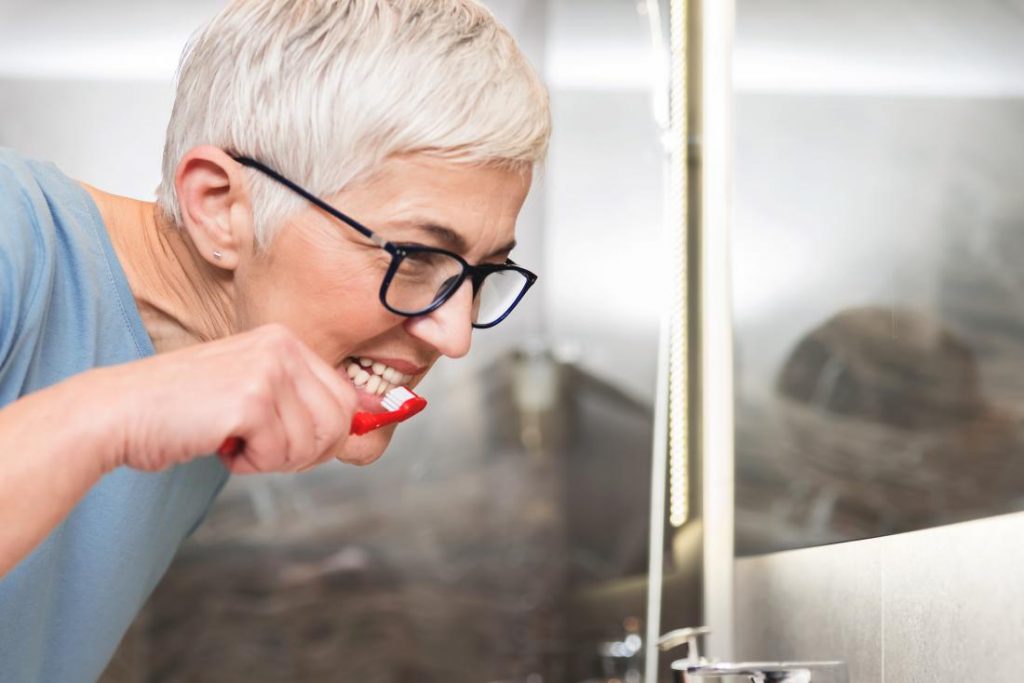
How To Use Hydrogen Peroxide As Teeth Whitener
Recently, the use of tooth whitening products in Carrollwood has increased dramatically. However, the fact is that many of these products are quite expensive and not everyone can afford them. So there is an interest in cheaper options, one of which is hydrogen peroxide. The interesting thing about hydrogen peroxide is that it is a component of many tooth whitening products and is easily available at home.
1. Supported by science?
The hydrogen peroxide you buy at pharmacies or drugstores is diluted by about 3%. This percentage can reach 10% in many tooth whitening products on the market. Dentists believe the dilution is good because high concentrations of hydrogen peroxide can destroy tooth enamel. Therefore, to avoid damage to the teeth, use only diluted portions and also for a short time. This is because prolonged use of roughed parts can damage your teeth.
2. How can you use hydrogen peroxide to whiten your teeth?
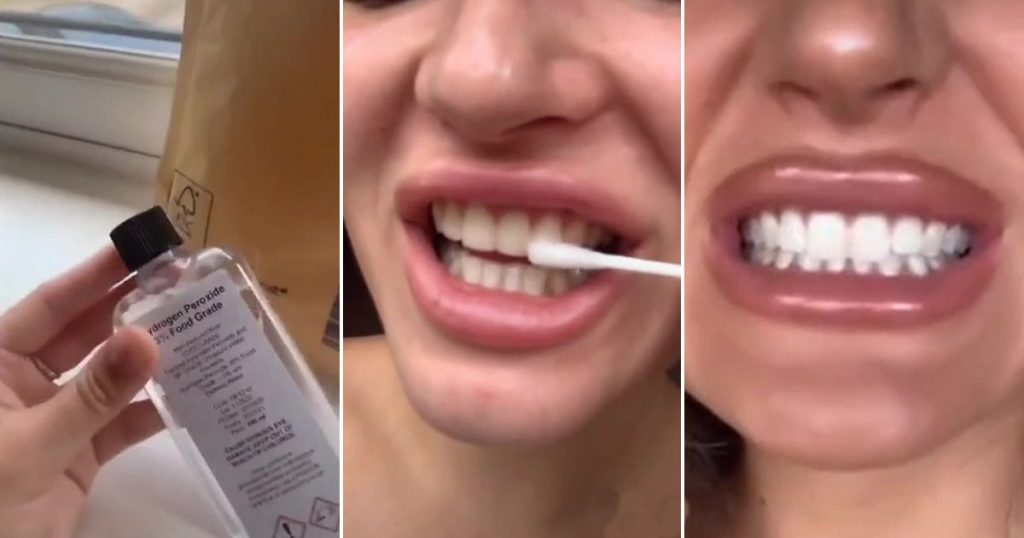
This can be done in two ways: you can gargle in your mouth or mix it with baking soda, which you apply to your teeth and rinse. If you want to use hydrogen peroxide as a rinse, the following steps must be followed:
- Pour equal portions of water and hydroxide peroxide and mix (half a cup is recommended).
- Gargle the mixture in your mouth for about half a minute.
- If you are in pain, stop and spit immediately. Also, make sure you don’t swallow the mixture.
a. For those who prefer hydrogen peroxide as a paste, here are the steps:
- Pour a few teaspoons of baking soda and add a small amount of hydrogen peroxide.
- Mix the two.
- Continue adding hydrogen peroxide until you get a consistent paste.
- Apply the paste to the teeth with a toothbrush.
- Let the paste stay on your teeth for two minutes.
- Rinse the toothpaste properly, gargling with water. Make sure there is no residue of the paste in your mouth.
3. What are the adverse effects?

Studies have confirmed that if you use hydrogen peroxide, either in a tooth whitening product or if you apply it yourself at home, there is a risk of damaging your teeth. This damage can be increased in certain circumstances. These circumstances are as follows:
- Using a really concentrated hydrogen peroxide solution.
- Allow the hydrogen peroxide solution to contact your teeth for a long time.
- Use hydrogen peroxide on your teeth very often.
All of this implies that, before using hydrogen peroxide on your teeth, you must make an appointment or consult your dentist about tooth whitening in your area. After taking a good look at the condition of your teeth, the Carrollwood dentist at a dental clinic near you will be able to offer more useful and professional advice on how to proceed. At Playa Family Dentistry, we can offer the safest and most effective tooth whitening in your area.
The most commonly observed adverse effect of the hydrogen peroxide used is tooth sensitivity. In this condition, it can be a little uncomfortable to eat hot or cold dishes after applying hydrogen peroxide to your teeth. If you experience pain when doing this, talk to your dentist. Tooth sensitivity is the result of hydrogen peroxide corroding tooth enamel – tooth enamel is the protective covering of teeth.
B. DOES HYDROGEN PEROXIDE WHITEN TEETH?

Teeth whitening has become increasingly popular in recent years, as more and more products reach the market. But many of these products can be quite expensive, which leads people to look for cheaper ways. The cheapest way to whiten your teeth at home (and the medicine supported by important research) is the main ingredient in most teeth whitening products: hydrogen peroxide.
1. What science says
Here’s what you need to know: Most bottles of hydrogen peroxide that you can buy at a pharmacy or grocery store are diluted by about 3 percent. The amount of hydrogen peroxide used in commercial lightening treatments varies and can reach up to 10% in some products. However, scientific studies suggest that dilution is a good thing when using hydrogen peroxide to whiten teeth. Too much concentration can damage the enamel or the outer layer of the teeth.
In one study, scientists applied diluted 10, 20 and 30 percent hydrogen peroxide solutions to human teeth that were extracted for different periods of time. They found that higher concentration solutions caused more damage to the teeth, as well as prolonged contact of the teeth with hydrogen peroxide. This suggests that low hydrogen peroxide treatments used for shorter periods of time have the least potential to damage teeth.
According to another study, scientists found that a 5% hydrogen peroxide solution was just as effective at whitening teeth as a 25% solution. However, to achieve the same degree of whiteness, the teeth would have to be whitened 12 times with the 5 percent solution to achieve the same degree of whiteness once with the 25 percent solution. This means that with short treatments with low concentration, you will have to do more treatments to achieve the desired degree of whiteness.
2. How do you use hydrogen peroxide as a teeth whitening agent?

There are two options: clean your mouth or mix with baking soda and put it on your teeth like a paste before rinsing.
a. Using hydrogen peroxide as a rinse:
- Mix equal amounts of hydrogen peroxide with water, e.g. B. 1/2 cup to 1/2 cup.
- Clean this mixture around your mouth for about 30 seconds to 1 minute.
- If it hurts in your mouth, stop and spit out the solution, trying not to swallow any of the mixture.
b. Using hydrogen peroxide in a paste:
- Mix a few teaspoons of baking soda in a bowl with a small amount of hydrogen peroxide.
- Mix the soda and the peroxide with a clean spoon.
- Add a little more peroxide until you get a thick, but not sandy, paste.
- Use a toothbrush to apply the paste to your teeth in small circular movements for two minutes.
- Leave the paste on your teeth for a few minutes.
- Then rinse the paste thoroughly by rinsing your mouth.
Make sure to remove the entire folder before proceeding with your day.
3. Are there any side effects?
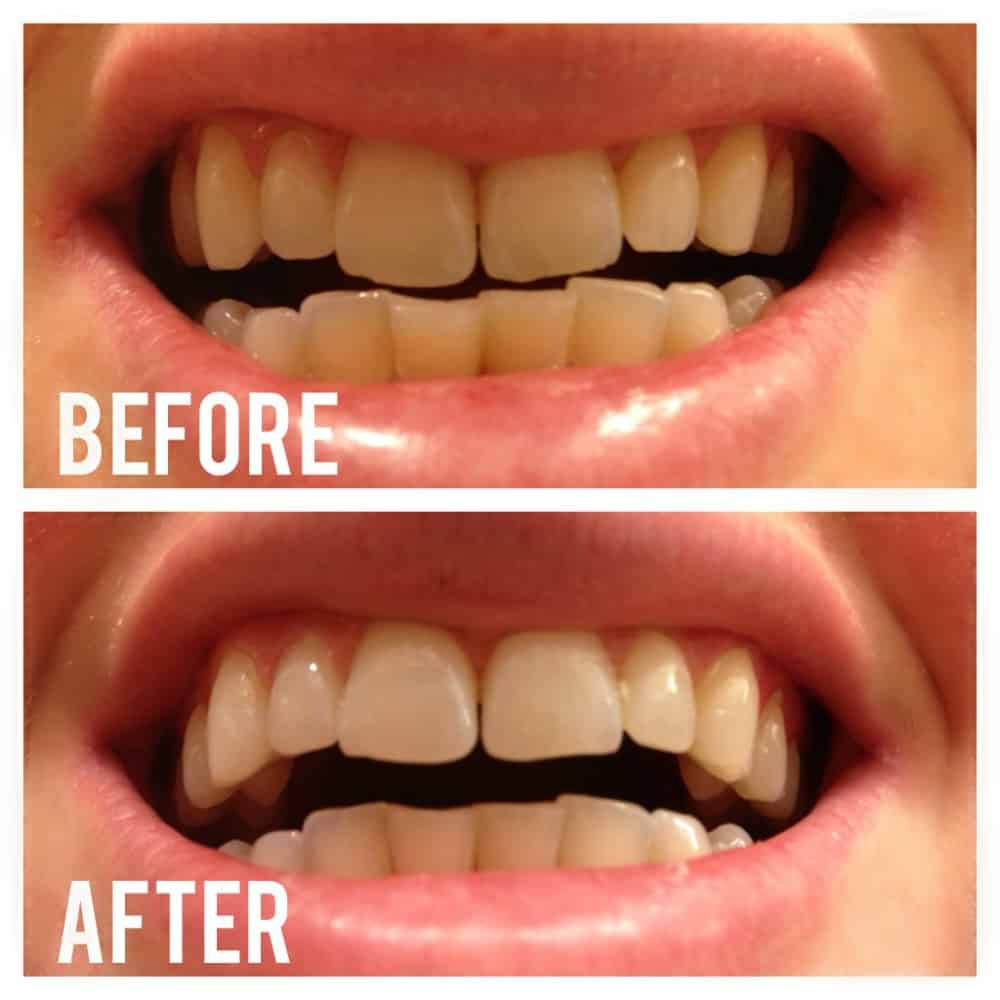
Several studies suggest that using hydrogen peroxide – either in a commercial product or at home – can damage your teeth. The risk of damage is increased if you:
- Use a very strong hydrogen peroxide solution
- Leave the hydrogen peroxide in contact with your teeth for a long time (more than a minute when cleaning or two minutes when brushing like a paste).
- Apply hydrogen peroxide to your teeth very often (more than once a day).
Before applying hydrogen peroxide to your teeth, ask your dentist to determine which strategy and application plan will make the most sense for your situation. Tooth sensitivity is possibly the most common side effect of using hydrogen peroxide. After treatment with peroxide, it may be uncomfortable to eat hot or cold foods or liquids. Avoid doing this while you are in pain.
This is because, if used too often or in very high concentrations, peroxide can cause significant damage to tooth enamel. The most serious side effects of bleaching with hydrogen peroxide include inflammation of the roots of the teeth in the gums. This problem can lead to secondary problems, such as infections, which can be expensive to treat.
4. Should you use hydrogen peroxide on your teeth?
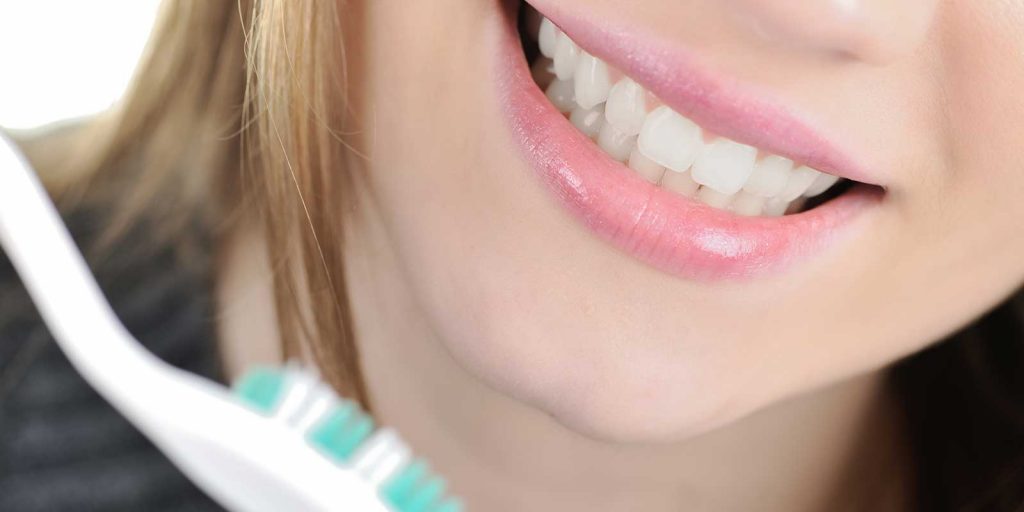
Hydrogen peroxide is an inexpensive household product that you are likely to have on hand now. When used with care, it can be an effective way to whiten your teeth. However, if used incorrectly – in very high or very frequent concentrations – it can cause serious and sometimes expensive tooth damage. If you want to whiten your teeth with hydrogen peroxide, be careful. If you have any questions, talk to your dentist, who can advise on the best way to clear your oral health. In the meantime, you can keep your teeth white and avoid staining by avoiding food and drinks that can stain your teeth.
a. This contains:
- Energetic drinks
- Coffee
- Red wine and tea
- Carbonated drinks, which can make your teeth more likely to stain
- Candy
- Berries, including blackberries
- Blackberries
- Strawberries and raspberries
- Tomato-based sauces
- Citrus fruits
By consuming these foods and drinks, rinsing or brushing your teeth later can prevent stains.
C. HYDROGEN PEROXIDE FOR TEETH WHITENING: WHAT TO KNOW
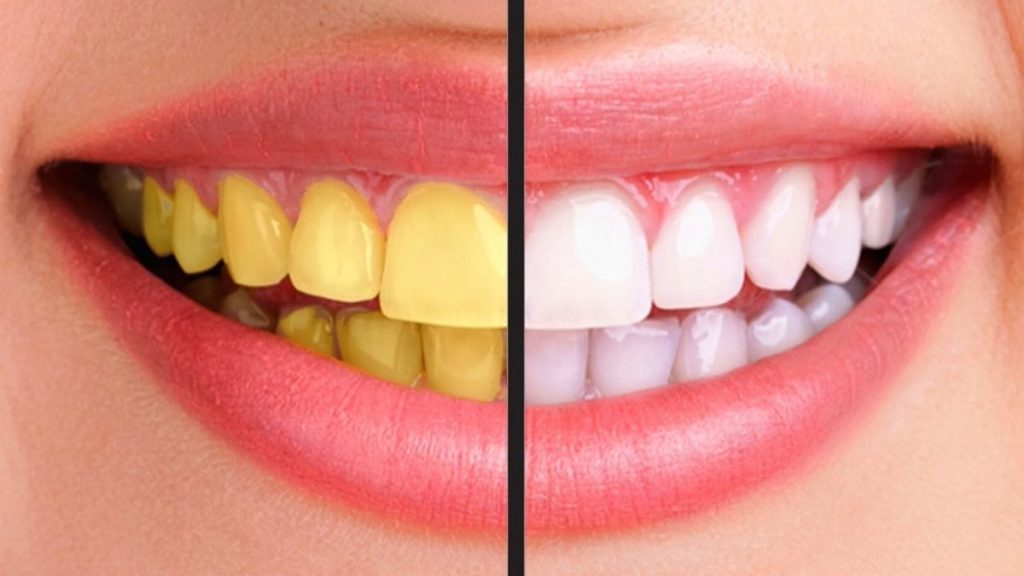
We offer products that we believe are useful to our readers. If you buy from links on this page, we can earn a small commission. Here is our process. Hydrogen peroxide is an antiseptic widely used in most homes and first aid kits. It is a versatile liquid with many different uses. Hydrogen peroxide is also an active ingredient in many tooth whitening treatments, which leads many people to wonder if hydrogen peroxide is also a good tooth whitener. Although hydrogen peroxide can help to whiten teeth in certain situations, there are some important safety issues to consider. Hydrogen peroxide can damage tooth enamel if a person uses the solution incorrectly.
1. It is efficient?
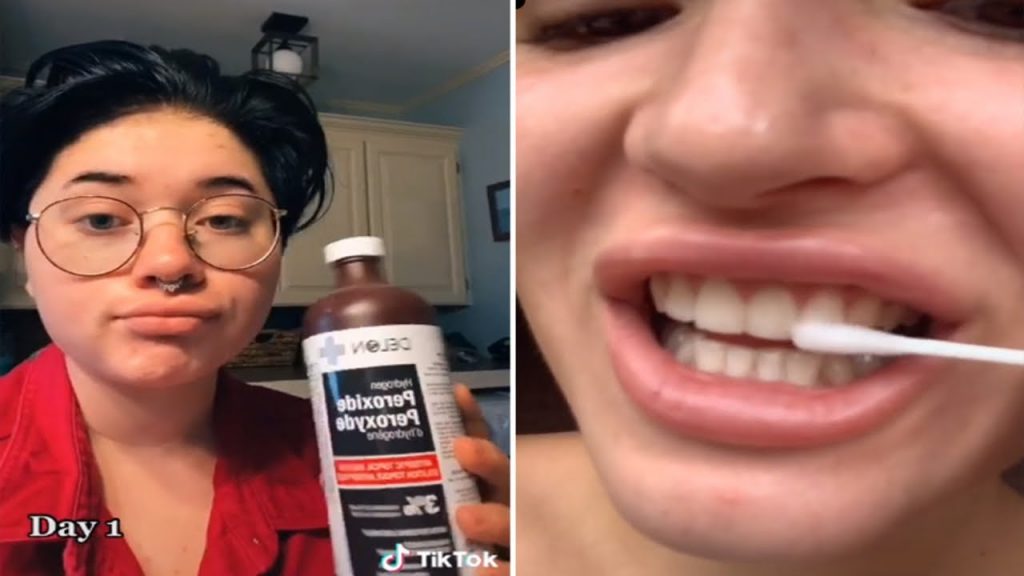
Hydrogen peroxide is a common and effective ingredient in many commercially available tooth whitening solutions. Products that contain peroxide, such as hydrogen peroxide and carbamide peroxide, act as whitening agents to change the color of teeth. Peroxide can partially penetrate tooth layers and remove compounds that cause discoloration. The hydrogen peroxide concentration in store-bought tooth whitening kits can be up to 10%. Dentists can also offer whitening treatments with hydrogen peroxide concentrations of up to 40%.
On the other hand, most store-bought hydrogen peroxides have a 3% concentration. Many people fear that higher levels of peroxide may lead to more side effects, such as: B. Enamel degradation and tooth sensitivity. However, this is not always the case. However, how much time these products spend on your teeth seems to matter. In fact, the authors of a 2016 study found that lower concentration gels had more negative effects on tooth enamel when left on the teeth for long periods of time.
Higher concentration gels generally take less time on teeth to be effective, which can reduce the risk of damage to the enamel. However, another study in the American Journal of Dentistry found that a mouthwash containing only 1.5% hydrogen peroxide caused a noticeable whitening of human tooth enamel after 4 weeks. People with sensitive teeth should consult their dentist before using hydrogen peroxide to whiten their teeth.
2. How to do it
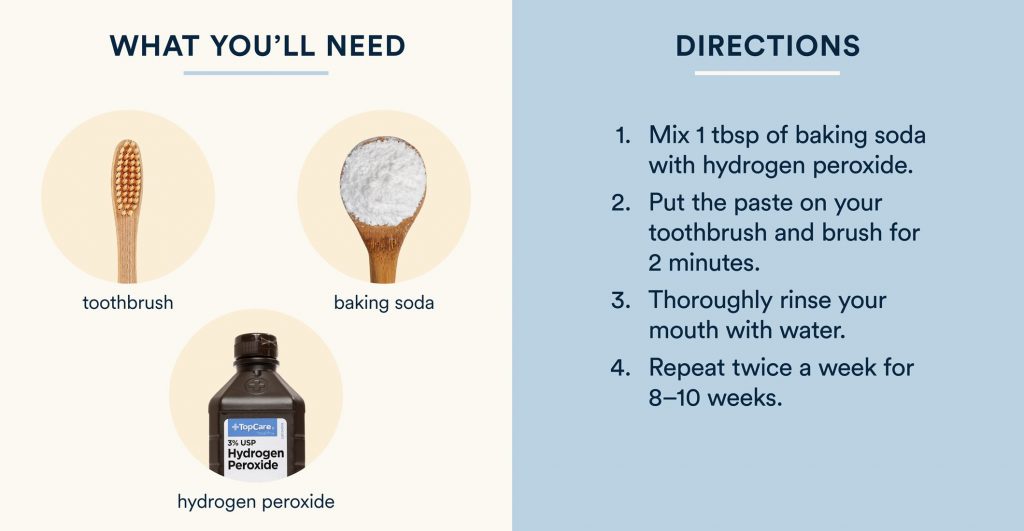
To make a peroxide mouthwash, add 2 ounces of 3% hydrogen peroxide and 2 ounces of water in a small glass. Clean this mixture in your mouth every day for 2 to 4 minutes before spitting it out. Do not swallow the liquid. Alternatively, a homemade paste can help some people remove small stains. To make this paste, add a teaspoon of hydrogen peroxide to the baking soda enough to make a smooth, thick paste. Apply the paste directly to the teeth with a toothbrush. Let the paste sit on your teeth for a few minutes and then rinse with water. Do not swallow the paste.
Many over-the-counter tooth whitening products contain hydrogen peroxide or carbamide peroxide, which breaks down into hydrogen peroxide. The American Dental Association (ADA) declares that products with the ADA seal of approval are safe and effective whitening treatments. Individuals must carefully follow the instructions on these products to obtain the best results. In cases where the discoloration of the tooth is less, a simple rinse containing hydrogen peroxide may be sufficient. Anyone who experiences pain or tenderness when using hydrogen peroxide products on their teeth should stop using them and contact a dentist.
3. Security and Risks
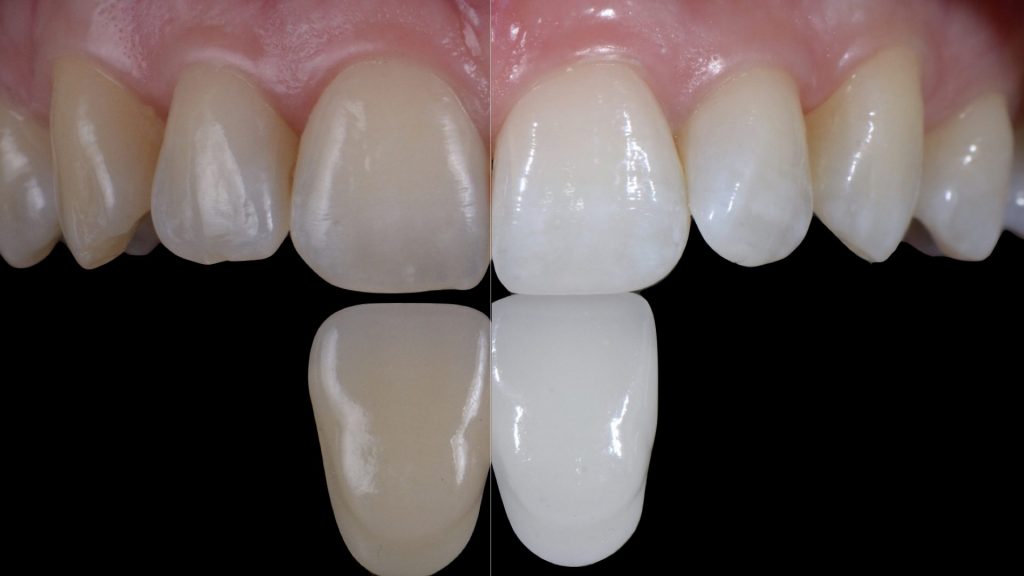
Before using hydrogen peroxide to whiten your teeth, there are some risks to be considered. The common side effects of tooth whitening methods are tooth and gum sensitivity and irritated or inflamed gums. Anyone who experiences these symptoms during treatment should stop using the product and contact the dentist to discuss other options.
Some people may prefer tooth whitening with hydrogen peroxide in a clinic. The dentist may ask the person to come and do the cleaning first. When cleaning the tooth surface, hydrogen peroxide can penetrate the teeth evenly. During this consultation, the dentist will also check for cracks, as cracks in the teeth can cause the peroxide to penetrate further into the tooth. This can become a problem if the peroxide comes in contact with the delicate dentin underneath, as it can cause irritation or tenderness.
4. Other solutions for tooth whitening at home
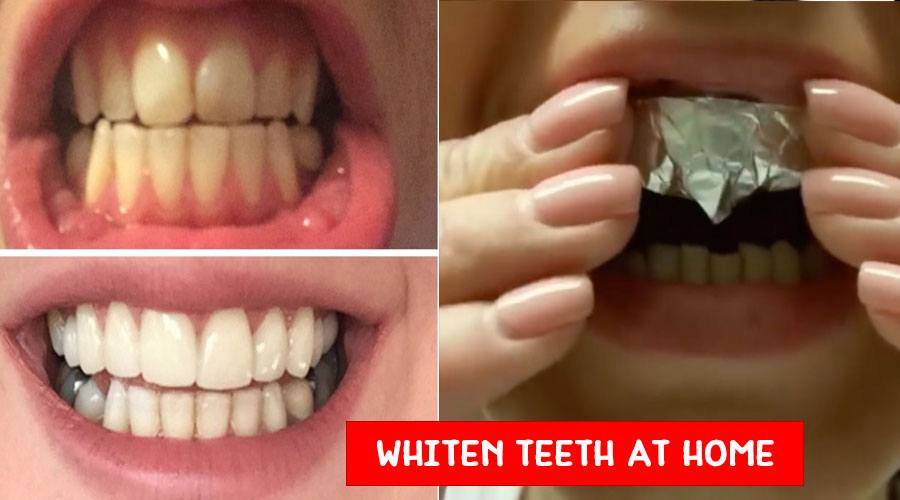
There are many other teeth whitening solutions that people can use at home. Although some anecdotal evidence suggests that they are effective, many of the popular home remedies for teeth whitening have very little scientific evidence to support their use.
However, most of these home remedies for teeth whitening should be relatively safe to try. They include:
- Coal and salt
- Sodium bicarbonate
- Lemon juice
- Pull the oil with coconut oil
- Apple vinegar
The ADA does not recommend any of these methods and notes that research shows that some of these methods are ineffective and can actually damage your teeth or cause other adverse effects. Regardless of which whitening solution a person is using, they should consider talking to their dentist first.
5. Summary
Hydrogen peroxide is a common home remedy for teeth whitening. It is part of many tooth whitening solutions for use at home and in the dental office. A simple mouthwash with hydrogen peroxide can help remove light stains. However, a person should avoid leaving hydrogen peroxide solutions on the teeth for long periods. For people with darker stains, stronger whitening options are available both at the counter and at the dentist.
Does ismile work

Teeth whitening is amongst one of the most popular procedures in dentistry. Teeth whitening makes teeth appear whiter, stain-free and makes the smile more aesthetically pleasing.
There is a wide range of home-based teeth whitening products like toothpastes, films, and gels. Teeth whitening performed by dentist consists of bleaching agents. These bleaching agents are high in chemical composition and need to be applied carefully by a dentist.
How Does Teeth Whitening Work?
The active component in most of the chemical teeth whitening products is composed of hydrogen peroxide (H2O2), which is released in the form of hydrogen peroxide or carbamide peroxide. Carbamide peroxide is a stable compound which disintegrates when contacted with water and releases hydrogen peroxide. Bleaching is a chemical process which removes chromogens responsible for tooth staining. Chromogens either accumulate superficially on the tooth structure causing extrinsic stains or slowly settle under the teeth leading to internal or intrinsic stains. Broadly, chromogens are classified into two groups:
- Chromogens which are composed of large organic compounds and contain conjugated double bonds
- Chromogens which are primarily composed of metal compounds
Tooth bleaching of chromogens, which are primarily composed of organic compounds, involves the dissolution of double bonds present in the organic chromogens. It has been observed that bleaching chromogens which are metallic in nature are tougher when compared to bleaching the organic chromogens.
Other options that are available to bleach metallic chromogens include tooth veneers or crowns. There is a wide range of teeth whitening products available to remove the stains. Selection of the whitening product usually depends upon the type of stain requiring the removal. However, broadly they are classified as:
- Cleansers like certain toothpastes which are chiefly composed of detergents and abrasives which help in the removal of chromogens from the tooth surfaces
- Bleaching agents which undergo a reaction with chromogens and lighten the color of discolored teeth
- Products which have both cleansing and bleaching reaction.
Home-based whitening kits are primarily suitable to lighten the milder stains, whereas harder stains are usually treated by a dentist. Treatment of end-point for teeth whitening depends on the time for which the bleaching agent is exposed and the extent of its concentration.
According to the American Academy of Cosmetic Dentistry, teeth whitening agents that can be used at home are:
Whitening Toothpastes
These pastes are primarily composed of large amounts of abrasives and detergents. These are primarily composed of low amounts of carbamide peroxide or hydrogen peroxide that aid in tooth lightening. However, these pastes do not have bleaching agents like sodium hypochlorite for lightening teeth. A recommended usage makes the teeth appear 1-2 shades lighter.
Over the Counter Whitening Strips and Gels
Whitening Strips are plastic strips which are fabricated in a way that they appropriately fit in the buccal or outer visible portions of the teeth. They slowly release peroxide gel which aid in teeth whitening. They are recommended for self-application and can be applied for a span of 30 minutes for 2 weeks. Whitening gels contain peroxide and can be applied on the tooth surface with the help of a brush and are usually instructed to be self-applied two times a day. Strips and gels also make the teeth appear one to two shades lighter.
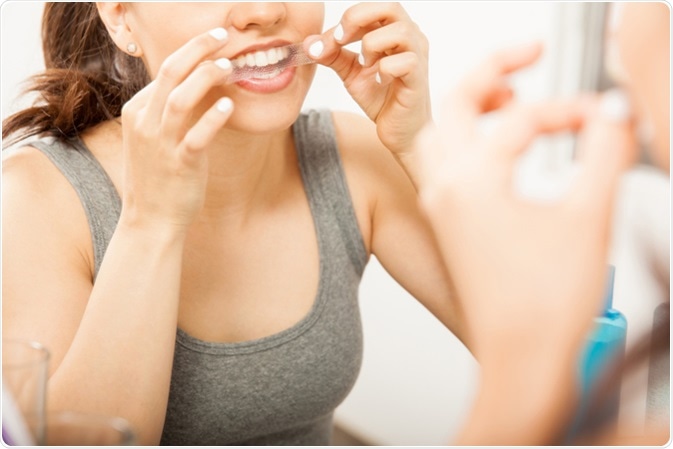
Woman applying a whitening strip on her teeth. Image Credit: antoniodiaz / Shutterstock
Related Stories
- Nanoparticles may be the next-generation solution for teeth whitening
Whitening Rinses
These oral rinses are composed of oxygen constituents like hydrogen peroxide and eventually react with the chromogens. Rinsing with them is recommended two times a day for about 60 secs. Tooth lightening is usually observed after 3 months of regular usage.
Tray-Based Teeth Whiteners
These trays can be both self applied or professionally by a dentist. A well fitted tray containing carbamide peroxide-bleaching gel can be applied for 2 to 4 hours during the day time or while sleeping over the night. This type of tooth lightening product also makes the teeth appear 1-2 shades lighter.
Adverse Effects of Teeth Whitening
At home teeth whitening procedures are generally safe for use; however, they do pose some adverse effects if they are not judiciously or cautiously used.
A long-term and unwarranted use of teeth whitening products can severely affect dental health. These products should never be used without the advice of a trained dental professional. Also, they must be applied for the recommended time frame only which usually lasts for 14 days.
The user must also not rely on all the teeth whitening products available in the market. It is advisable to use the products suggested by a registered dentist or products which holds the seal of America Dental Association or a local government body which makes these products licensed to be sold in the market.
Here is a list of few adverse effects of teeth whitening products if they are not applied correctly:
- Teeth become sensitive after a prolonged usage
- Periodontal problems like mild gingival irritation
- Loss of mineral content of teeth
- Increased risk for demineralization of teeth
- Damage to the pulp of the teeth
- Tooth erosion
Even though, teeth whitening makes teeth appear whiter and stain-free; however, recent research has indicated potential long-term hazards and side effects associated with this procedure like discoloration and damage of dental fillings.
Hydrogen peroxide teeth whitening side effects

How long it takes hydrogen peroxide to whiten teeth depends on the teeth condition, the reason for discoloration, and the type of treatment used.
How long it takes hydrogen peroxide to whiten teeth depends on three things, including:
- Condition of the teeth
- Reason for discoloration of the teeth
- Type of treatment you want (at-home kits or in-office treatment)
Sessions conducted at a dentist’s office depend on the concentration of hydrogen peroxide.
- The more the concentration, the fewer the sessions required.
- However, more concentration is associated with a risk of greater damage.
- Instead, experts recommend using lower concentrations and shorter treatment times to avoid damage to the teeth.
Professional teeth-whitening treatment typically takes 3-4 weeks to whiten your teeth.
For over-the-counter and in-home teeth-whitening kits to work, it will take at least a month of wearing mouthpieces every night before the whitening effect sets in. The duration of obtaining results depends on how white your teeth are when you initiate the treatment.
How do you use hydrogen peroxide as a teeth whitener?
You can either use homemade mouthwash recipes using household ingredients, try over-the-counter whitening kits, or get teeth whitening done from a dentist.
Homemade mouthwash recipes involve swishing hydrogen peroxide solution around your mouth or applying a paste of hydrogen peroxide mixed with baking soda on your teeth followed by rinsing it off. You must, however, exercise caution because this may damage your dental enamel.
Homemade hydrogen peroxide mouthwash
- Mix three percent hydrogen peroxide (one part) and water (two parts).
- Shake the ingredient mixture thoroughly and use it as a mouthwash.
- Spit it out the moment you feel a burning sensation and take care not to swallow the solution.
Hydrogen peroxide paste
- Take one teaspoon of baking soda and two teaspoons of hydrogen peroxide in a dish.
- Mix the soda and peroxide with a spoon.
- Apply the paste to your teeth in a circular motion with the help of a toothbrush for two minutes.
- Swish water around your mouth until the whole paste is rinsed off completely.
Additionally, there are plenty of store-bought options, including:
- Teeth-whitening kits
- Teeth-whitening strips
- Teeth-whitening pens
- Teeth-whitening mouthwash
- Teeth-whitening toothpaste
Most of these options contain hydrogen peroxide diluted to about three percent. The amount of hydrogen peroxide in office-based whitening treatments varies, with the maximum concentration being 10%.
If you want quicker results than the above two methods but maintain good oral health, you always have the option of getting tooth whitening treatments from a professional.
Are there any side effects of teeth whitening with hydrogen peroxide?
Although hydrogen peroxide can make your teeth a few shades whiter, you must know the risks before you opt for any of the methods of using it.
Teeth whitening with hydrogen peroxide can produce side effects such as:
- Teeth sensitivity
- Gum irritation
- Enamel and tooth damage
- Vomiting from accidental ingestion
- Gastritis (inflammation of the stomach)
- Colitis (inflammation of the bowel)
Some of these side effects, such as enamel and tooth damage, are usually because of using a higher concentration. Always be careful while handling hydrogen peroxide of any concentration.
Side effects such as tooth sensitivity can be caused with any concentration. If you are experiencing any of these side effects, discontinue using hydrogen peroxide and contact your dentist.
What causes tooth discoloration?
There are two types of staining that cause tooth discoloration: intrinsic and extrinsic staining.
- Intrinsic staining, also known as internal staining, is caused by heredity, age, antibiotics, excessive fluoride levels, and developmental abnormalities and can begin before the tooth has erupted. Some dental restorations may induce tooth discoloration after the tooth has erupted.
- Extrinsic staining, also known as external staining, is caused due to environmental factors such as smoking, excessive consumption of tea, coffee, wine, and certain foods, antibiotics, and metals such as iron or copper. Colored substances from various sources are absorbed into dental pellicles or directly onto the tooth surface, resulting in staining.